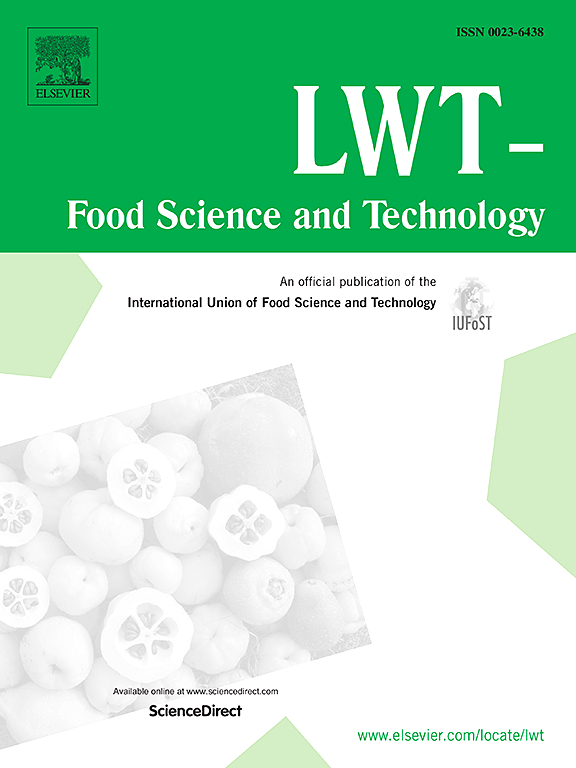Metabolomics-based insights into the mechanism of quorum sensing-enhanced conjugated linoleic acid production in Limosilactobacillus fermentum L1
IF 6
1区 农林科学
Q1 FOOD SCIENCE & TECHNOLOGY
引用次数: 0
Abstract
The mechanism underlying the QS-mediated regulation of metabolism to obtain a high yield of conjugated linoleic acid (CLA) from lactic acid bacteria remains unclear. In this study, the mechanism by which QS regulates high CLA production in Limosilactobacillus fermentum L1 (L. fermentum L1) was revealed based on metabolomics and biochemical indices. Inhibition of the QS of L. fermentum L1 significantly decreased its CLA production. The content of CLA produced by L. fermentum L1 dropped from 795.12 μg/mL to 446.84 μg/mL with the addition of quorum sensing inhibitors (P < 0.01). A total of 2389 metabolites were identified from L. fermentum L1. 306 differential metabolites were discovered in the high- and low-producing CLA groups based on multivariate statistical analysis, and QS clearly regulated the changes in the levels of these metabolites in the strain. Differential metabolites were mainly involved in energy metabolism, signal transduction, redox, and other metabolic pathways. The levels of glutathione and malondialdehyde in the redox pathway were significantly increased in the high-producing CLA group, indicating that QS regulates the redox imbalance of the strain to produce high CLA. This study provides a theoretical basis for development of CLA-rich functional foods.
求助全文
约1分钟内获得全文
求助全文
来源期刊

LWT - Food Science and Technology
工程技术-食品科技
CiteScore
11.80
自引率
6.70%
发文量
1724
审稿时长
65 days
期刊介绍:
LWT - Food Science and Technology is an international journal that publishes innovative papers in the fields of food chemistry, biochemistry, microbiology, technology and nutrition. The work described should be innovative either in the approach or in the methods used. The significance of the results either for the science community or for the food industry must also be specified. Contributions written in English are welcomed in the form of review articles, short reviews, research papers, and research notes. Papers featuring animal trials and cell cultures are outside the scope of the journal and will not be considered for publication.
 求助内容:
求助内容: 应助结果提醒方式:
应助结果提醒方式:


